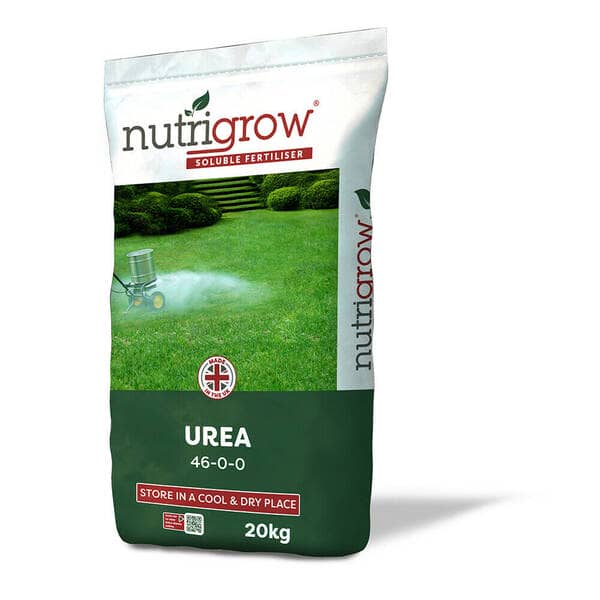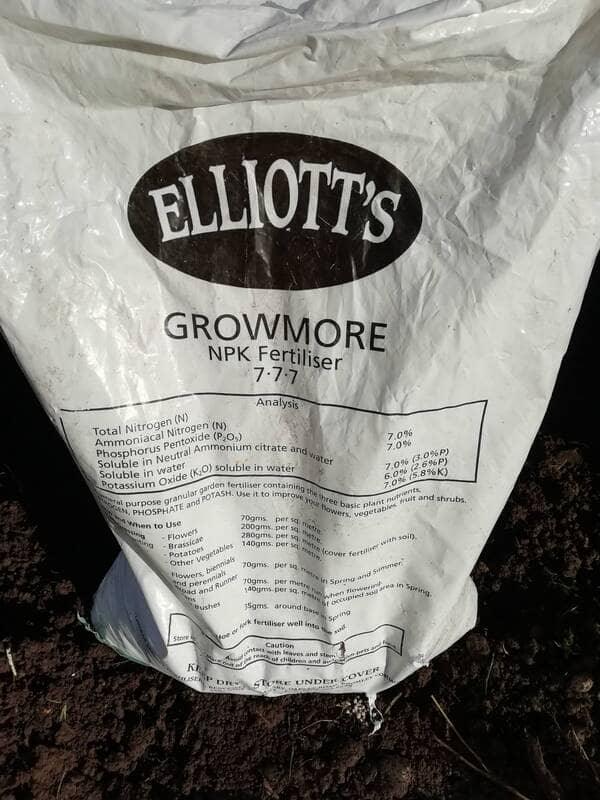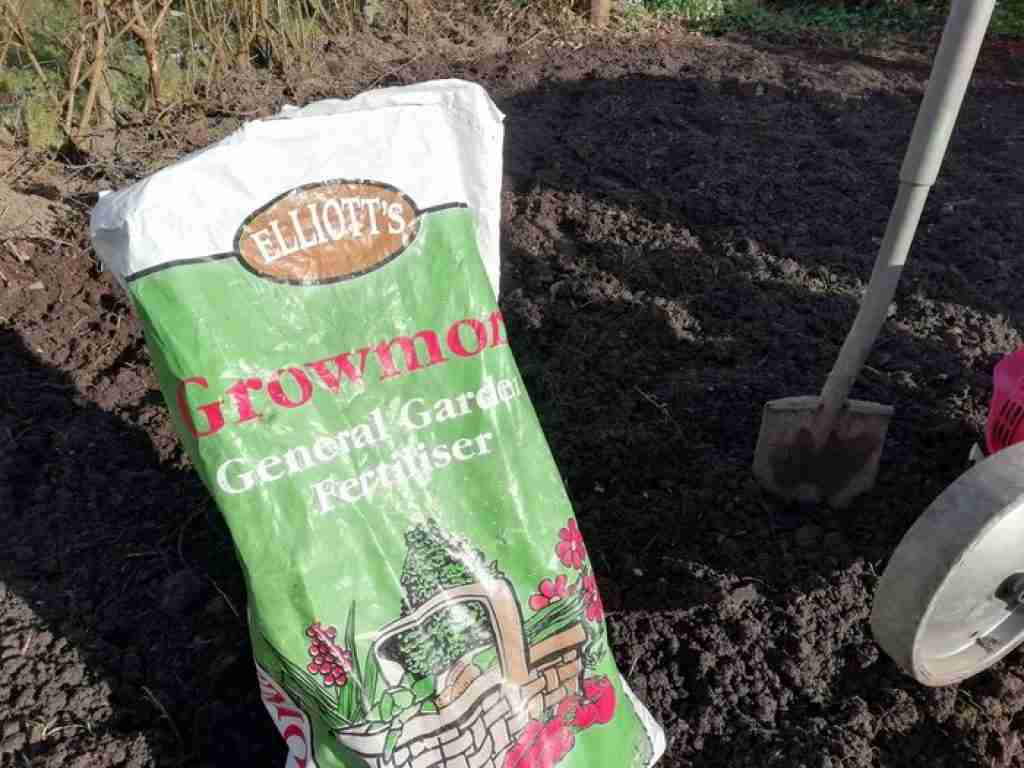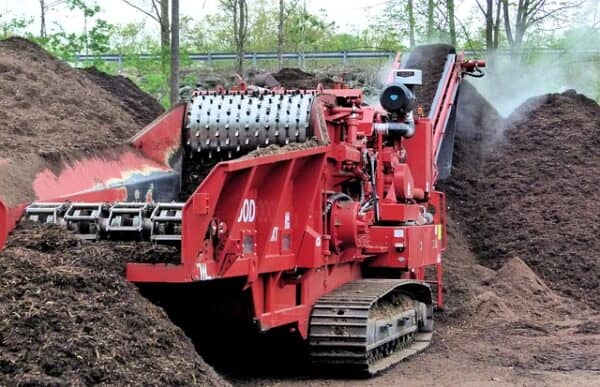Nitrogen is essential to plant growth as it helps to form the building blocks of proteins and other vital plant enzymes. It is also part of the chlorophyll molecule necessary for your potato plant to perform photosynthesis and produce energy for the plant. But what role does nitrogen play in potato production? – the excess energy made by your potato plant is stored in the tubers, making nitrogen necessary for producing large, healthy tubers.
What is nitrogen fertiliser?
Commercial fertilizer comprises three vital nutrients for healthy plant growth: nitrogen, phosphorus, and potassium. Each amount is expressed in an NPK ratio displayed on the container. The numbers represent the percentage (by weight) of nitrogen (N), phosphorus (P), and potassium (K) in the formula.
When the three numbers are equal (or nearly equal), it is referred to as a balanced fertiliser. When the first number (nitrogen) is significantly higher than the others, the fertiliser is considered a nitrogen fertiliser. Nitrogen fertilisers contain a high amount of nitrogen with little or no phosphorus and potassium.

Nitrogen fertiliser can be either chemical or organic. Both organic and chemical fertilizers are sold in garden centers and hardware stores in the gardening section.

Some organic nitrogen fertilisers include: alfalfa meal, soy meal, composted manure (such as chicken or horse manure), bloodmeal, feather meal, or fishmeal, explains Grow it Organically.
When looking for a nitrogen fertiliser for your potatoes, look for a formula where the first number in the NPK ratio is the highest, such as 34-0-0 or 15-5-8.
What role does nitrogen play in potato production?
Nitrogen is necessary for all plant growth, including your potatoes. It plays a vital role in capturing and storing energy from the sun during photosynthesis. Because nitrogen is part of the chlorophyll molecule, too much or too little nitrogen can cause issues with plant growth and tuber formation.
How do I know if my soil needs nitrogen?
A soil test done in the fall is the best way to determine how much nitrogen your soil needs. Most university extension services provide soil testing services for a nominal fee. The test will provide you with a written summary of your soil and detailed instructions for correcting any problems.
It will tell you how much nitrogen (as well as other nutrients) your soil needs. Follow the instructions for amending the soil (and adding nutrients) before planting your potatoes in the spring.
It is recommended that you test your garden soil every 3 to 5 years as it changes over time.
Do potatoes need nitrogen fertilizer?
A balanced starter fertilizer applied when you plant your potatoes will give them the nutrients they need to get off to a good start. But the nutritional needs of your potatoes change through the growing season. In some cases, this may mean you need to provide your potatoes with a boost of nitrogen fertilizer when they need it.
At what stage should nitrogen be applied to potatoes?
As a rule, side-dressing your potatoes when they are 4 to 8 inches tall with a nitrogen fertilizer will encourage healthy plant growth. They benefit from an additional application of nitrogen fertilizer about 1 to 2 months after planting them.
However, it should be noted that too much nitrogen fertiliser can lead to overgrown plants that do not produce well. It is advised to test your soil before applying fertilizer in the spring and following the recommendations in the soil test report.
How do I apply nitrogen fertiliser to my potatoes?
Nitrogen fertilizer for potatoes is typically applied when they are 4 to 8 inches tall and again a few weeks later (about a month or two after planting). It is applied in a band alongside the rows and worked into the existing soil. This is referred to as side-dressing your potatoes. If the fertiliser is applied over the top of the plants this is known as a top dressing.
Many growers incorporate nitrogen fertiliser when they hill their potatoes, but caution must be used to mix the fertiliser into the soil and avoid getting it on tender roots.
However, you can use a liquid fertilizer to apply nitrogen with a hose-end sprayer. Liquid fertilisers are generally foliar feeders, which means the plants absorb nutrients through the leaves. A foliar feeder can be applied by saturating the plants and letting the excess drip into the soil where the roots will absorb it. Liquid nitrogen fertilizer can be applied when you water your potatoes.
But, beware. Not all liquid fertilizers are foliar feeders and may harm the foliage if you get it wet. Always check the label carefully to determine if it is safe to wet the foliage when applying liquid fertilizer.
How much nitrogen do potatoes need?
How much nitrogen your potatoes need depends on the soil’s condition, the growth rate, and the soil’s pH. However, the University of Minnesota Extension recommended 0.15 pounds of nitrogen for a 50-foot row of potatoes when you side-dress them.
How can you tell if potatoes need more nitrogen?
The best way to assess when your potatoes need nitrogen (other than the soil test, of course) is to watch closely for signs of a nitrogen deficiency. The foliage of your potatoes will alert you if they are not getting enough nitrogen. Here’s what to look for.
- Yellowing of older leaves.
- Browning and dying of older leaves.
- New leaves are yellowish-green.
- Green leaf veins with yellow margins.
- Stunted growth.
- Slow growth.
What happens when potatoes get too much nitrogen?
The most noticeable sign that your potatoes have too much nitrogen is rapid, overgrown tops that are bright green, but that isn’t the only sign you should look for. Take note of these other signs of excessive nitrogen.
- Canopy flops or falls over with winds.
- Leaf roll.
- Deformed leaves.
- Small tubers.
- Delayed tuber formation.
Summary
While it is true that potatoes need nitrogen and often benefit from side-dressing them with nitrogen fertilizer when they are 4 to 8 inches tall and again about two months after planting them, caution must be exercised not to give your potatoes too much nitrogen. Ironically both too little and too much nitrogen can cause a poor yield in potatoes.



